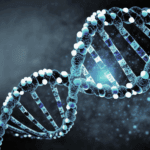In the world of cancer research, few stories are as personal—or as astonishing—as that of Professor Richard Scolyer. A leading Australian pathologist who has spent years advancing cancer treatment suddenly found himself on the receiving end of a devastating diagnosis: stage 4 glioblastoma, one of the most aggressive brain cancers known to medicine.
But one year later, against every expectation, Scolyer has defied the odds. He’s been declared cancer-free—and he owes that miracle, in part, to a treatment that he and his team helped design. His recovery isn’t just a personal victory; it’s a bold signpost pointing toward what could be the future of cancer care.
The Diagnosis That Changed Everything
Richard Scolyer’s life took a dramatic turn in May 2023. While traveling through Europe for work-related conferences, he experienced a sudden and unexplained seizure in Poland. It wasn’t just a one-off incident—it was the body’s way of sounding a silent alarm. After medical testing, the shocking culprit was revealed: glioblastoma multiforme, an especially lethal form of brain cancer that tends to grow quickly and resist treatment.
For most people, a glioblastoma diagnosis is a terrifying final chapter. It’s fast-moving, difficult to remove entirely, and notorious for returning even after aggressive treatment. Median survival time? Typically 12 to 15 months, even with surgery, chemotherapy, and radiation.
But Scolyer wasn’t just any patient—he was a world-renowned cancer researcher, co-director of the Melanoma Institute Australia, and someone who had dedicated his career to studying how the immune system can be used to fight cancer. Now, he was going to turn that expertise inward.
Turning the Tables on Cancer With Innovation
Faced with an illness that didn’t have a cure, Scolyer and his long-time research partner, Dr. Georgina Long, decided to take a highly unconventional path. Instead of relying only on standard treatments, they designed a groundbreaking clinical strategy based on immunotherapy—a method that trains the body’s own immune system to detect and destroy cancer cells.
Immunotherapy has shown remarkable success in treating cancers like melanoma and certain lung cancers, but it had never been tried in this way for glioblastoma. One reason is that the brain is a particularly tricky place for immune cells to work in. The blood-brain barrier—a sort of protective wall around the brain—makes it hard for many medications, including immune-targeting therapies, to reach tumors effectively.
So, they took a chance. Their approach combined immunotherapy both before and after surgery, a method known as neoadjuvant and adjuvant therapy. Instead of waiting for the cancer to come back, the idea was to launch a preemptive strike.
This strategy had never been tested in someone with Scolyer’s diagnosis. But with little to lose and everything to gain, they went for it.
Read more: A 70-Year-Old Ugandan Woman Just Gave Birth To Two Healthy Twin Babies
Personalized Medicine in Action: A Custom-Made Vaccine
One of the most fascinating parts of Scolyer’s treatment was the creation of a personalized cancer vaccine. This wasn’t the kind of vaccine you’d get at a pharmacy. It was a made-to-order formulation, engineered to match the genetic fingerprint of his tumor.
Here’s how it worked: Scientists sequenced the DNA of Scolyer’s tumor to find the exact mutations that made it different from normal brain cells. They then used that data to create a vaccine that could “teach” his immune system how to recognize those specific mutations—essentially labeling the cancer as a threat.
This kind of individualized approach is part of what’s known as precision oncology. Rather than using a blanket method to treat everyone the same way, doctors now have the ability to tailor treatment plans based on a patient’s unique biology. For Scolyer, that meant his immune system could potentially act like a guided missile, going after cancer cells while leaving healthy ones untouched.
Backed by Surgery and Radiation
Of course, the vaccine and immunotherapy weren’t used in isolation. As with most brain cancer treatments, surgery came first. Doctors successfully removed the tumor, which gave Scolyer a clean slate to work with.
But the next step—making sure the cancer didn’t come back—was just as important. That’s where radiation therapy came in. Over several weeks, he underwent targeted radiation sessions designed to destroy any leftover cancer cells that might still be lurking.
Combined with the immunotherapy drugs and the personalized vaccine, this created a three-pronged attack: cut it out, blast what remains, and let the immune system handle the rest.
Battles Behind the Breakthrough
Despite the headlines, Scolyer’s recovery hasn’t been smooth sailing. His body faced serious side effects from both the treatment and the disease. At different points in his journey, he battled epileptic seizures, liver complications, and even pneumonia. These setbacks were not only painful—they were frightening.
But through it all, Scolyer remained vocal about his journey, using social media to document both the progress and the pain. He shared updates with the honesty of a patient and the insight of a doctor. His transparency brought attention not only to his unique case but also to the daily challenges faced by people undergoing experimental treatments.
He reminded the public that being a “miracle patient” doesn’t mean avoiding suffering—it means pushing through it.
The Power of Partnership: A Team Effort
One key element behind this success story is the deep trust and collaboration between Scolyer and Dr. Georgina Long. The two have worked side by side for decades, leading global research efforts in cancer immunotherapy.
Their teamwork wasn’t just scientific—it was personal. Long helped monitor Scolyer’s progress daily, making fast decisions about his treatment, tweaking medications, and adjusting plans as new issues arose. It was a blend of cutting-edge science and real-time clinical care.
Their story is a reminder that progress in medicine isn’t just about data and test tubes. It’s about human connection, courage, and mutual belief in a better outcome.
A Message That Echoes Worldwide
As of now, Scolyer remains cancer-free—a phrase rarely used when talking about glioblastoma. His most recent MRI scan showed no signs of tumor recurrence, a major milestone for someone given only months to live.
Of course, glioblastoma has a well-earned reputation for returning without warning. Doctors, including Scolyer himself, are cautious. He’s not declaring total victory just yet. But being alive, well, and able to return to parts of normal life one year later is a triumph in itself.
His case is being closely studied, and the treatment protocol is now being considered for broader trials. If more patients respond the way he did, this could lead to a seismic shift in how doctors approach terminal brain cancers.
Read more: Scientists Use Patient’s Own Eye Stem Cells to Restore Vision in Groundbreaking Study
Hope, Redefined
Professor Scolyer’s story is many things: a personal triumph, a scientific leap, and a testament to the power of never giving up. But above all, it’s a story of hope—not the vague kind that comes from wishful thinking, but the grounded, gritty kind that’s built on risk, research, and resilience.
By turning his own life into a clinical experiment, Scolyer has not only extended his time on earth—he may have opened a new chapter for others who face a diagnosis like his.
Sometimes, the best cure for fear is action. And sometimes, the best way to beat cancer is to outthink it.










